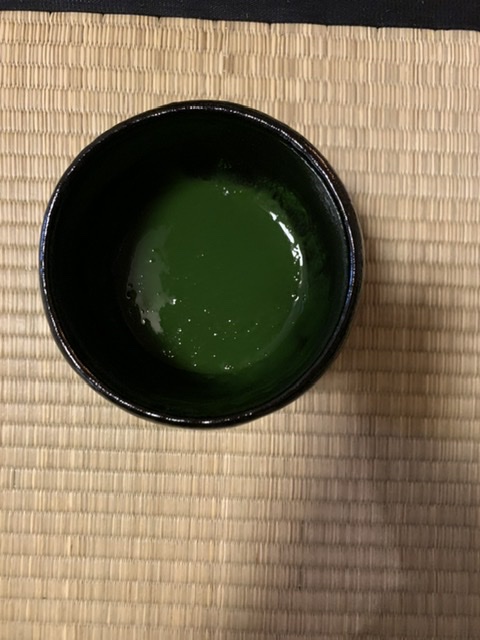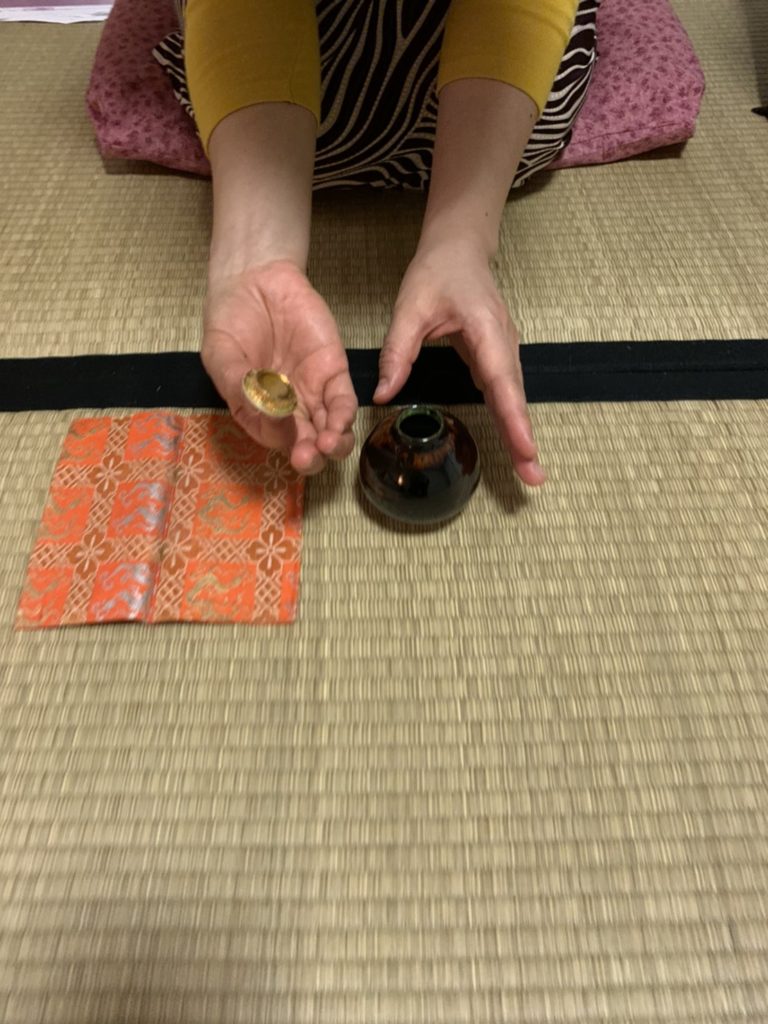先週のお稽古は四ケ伝のうち、唐物風炉点前でした。お軸は『喫茶去』(きっさこ)。意味は「まぁ、お茶でも飲んでいってください」
Last week we practiced one of the four shikaden procedures, karamono furo demae. The words of calligraphy on the scroll is kissako, which literary means “Would you like some tea?”
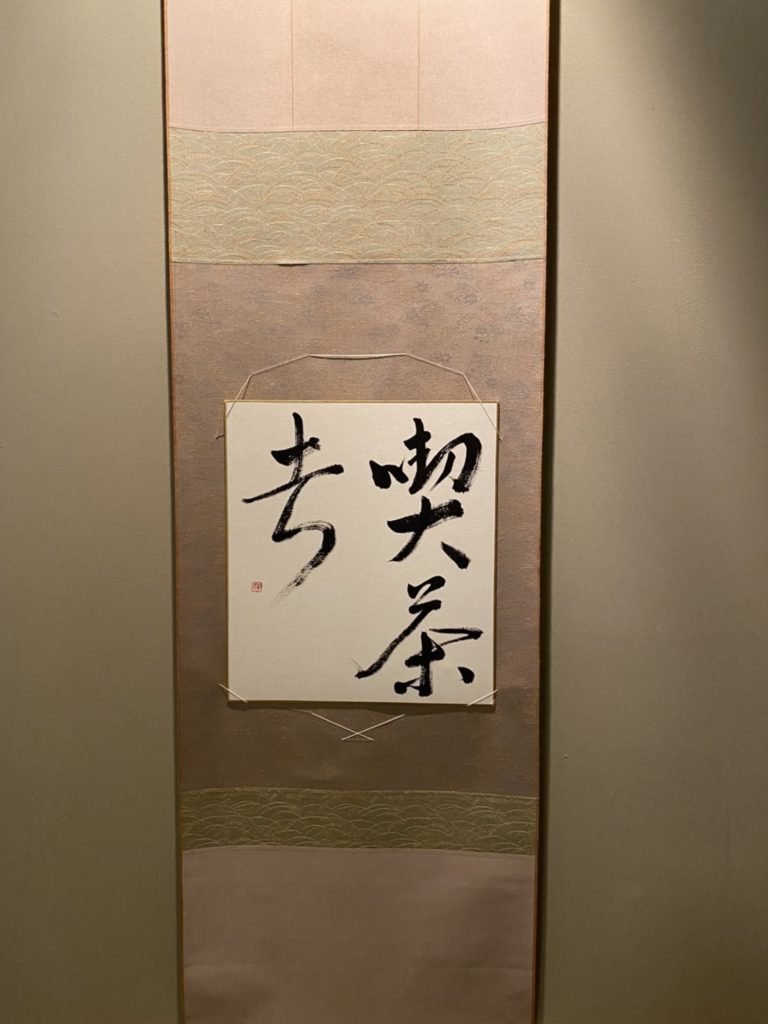
花はギボウシです。
The flower and leaves in the alcove are hostas from my garden.
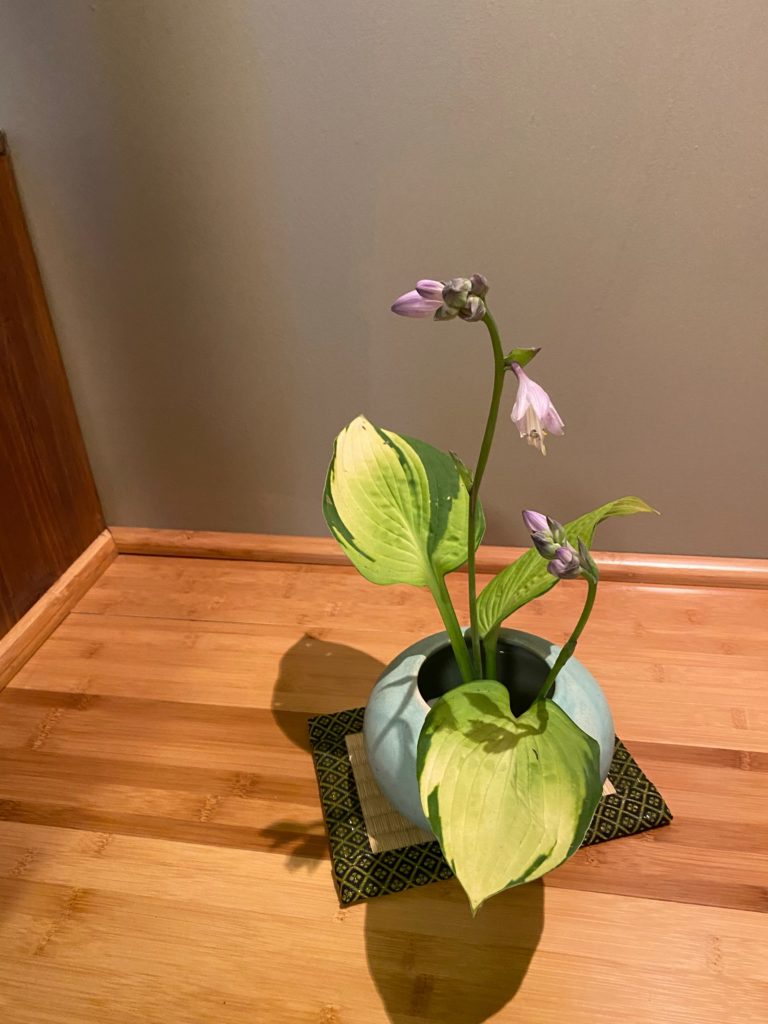
唐物の準備は、曲げ水指を風炉の隣に置き、水指の前に仕覆に入った唐物茶入れを置きます。黒楽茶碗に茶巾、茶筅、元節茶杓を仕込みます。三種類のお菓子を用意します。
Before the guests entered the tearoom, we prepared two containers: first the mage mizusashi (a bentwood water container) that we put next to the furo (hearth) and second the karamono chaire (a Chinese tea container) that we wrapped in a silk pouch and placed in front of the mizusashi. Next we needed a rakucjawan (a Japanese pottery teabowl) and a motobushi chashaku (a bamboo teaspoon with a node at the end) and three different varieties of sweets.
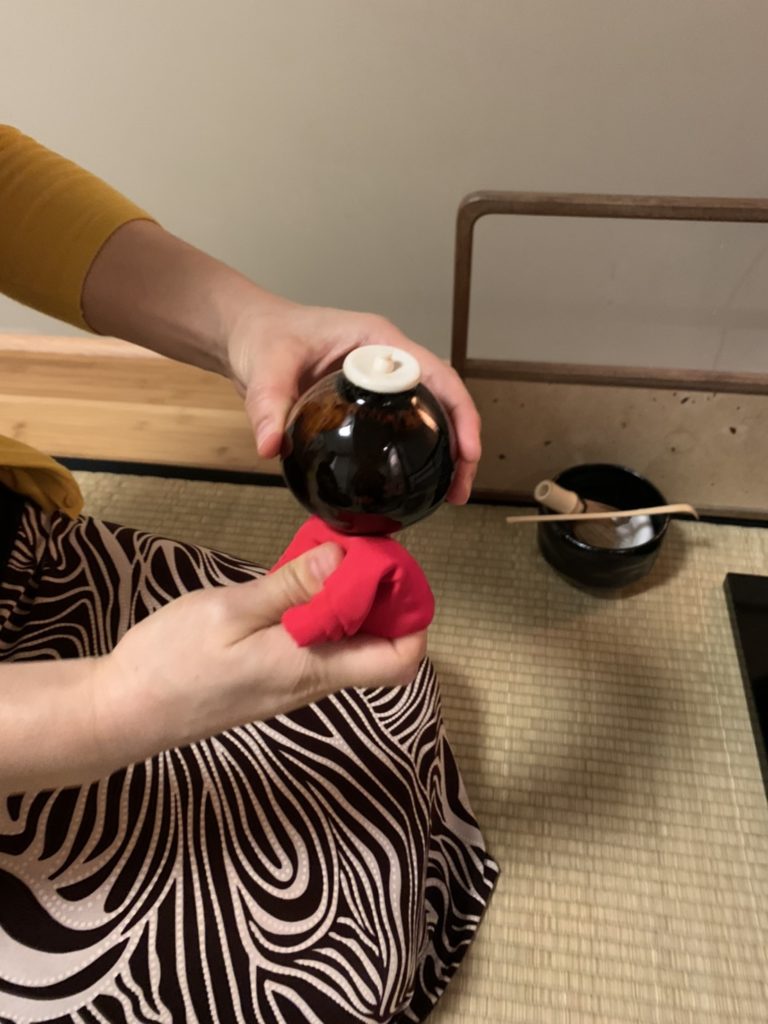
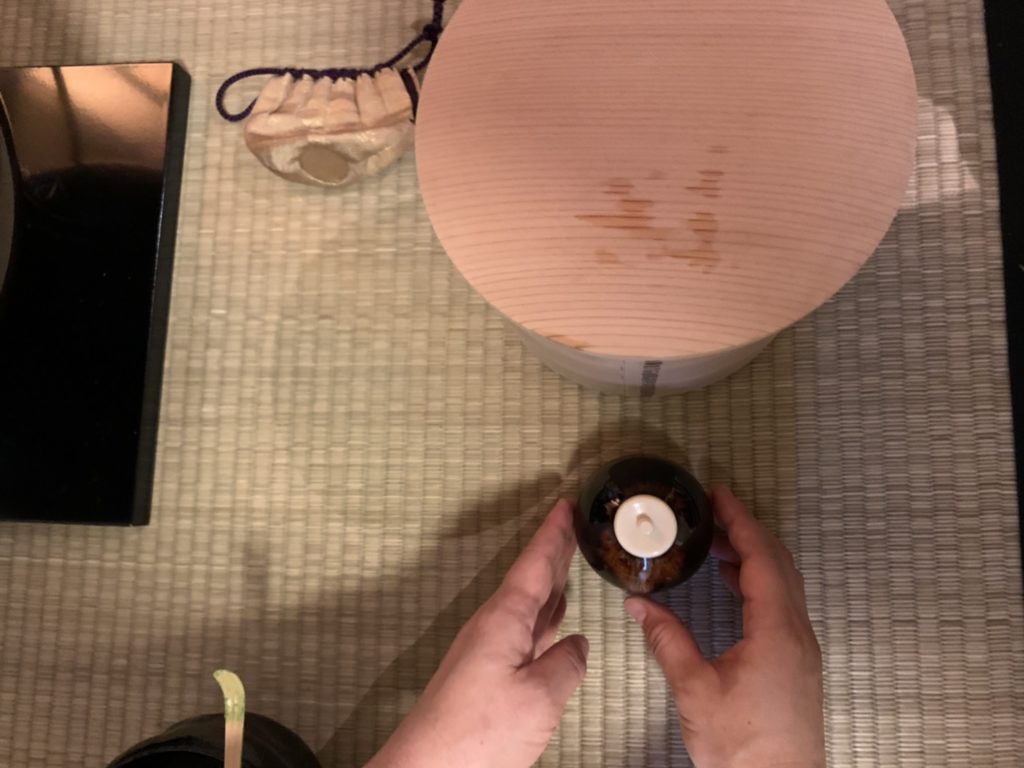
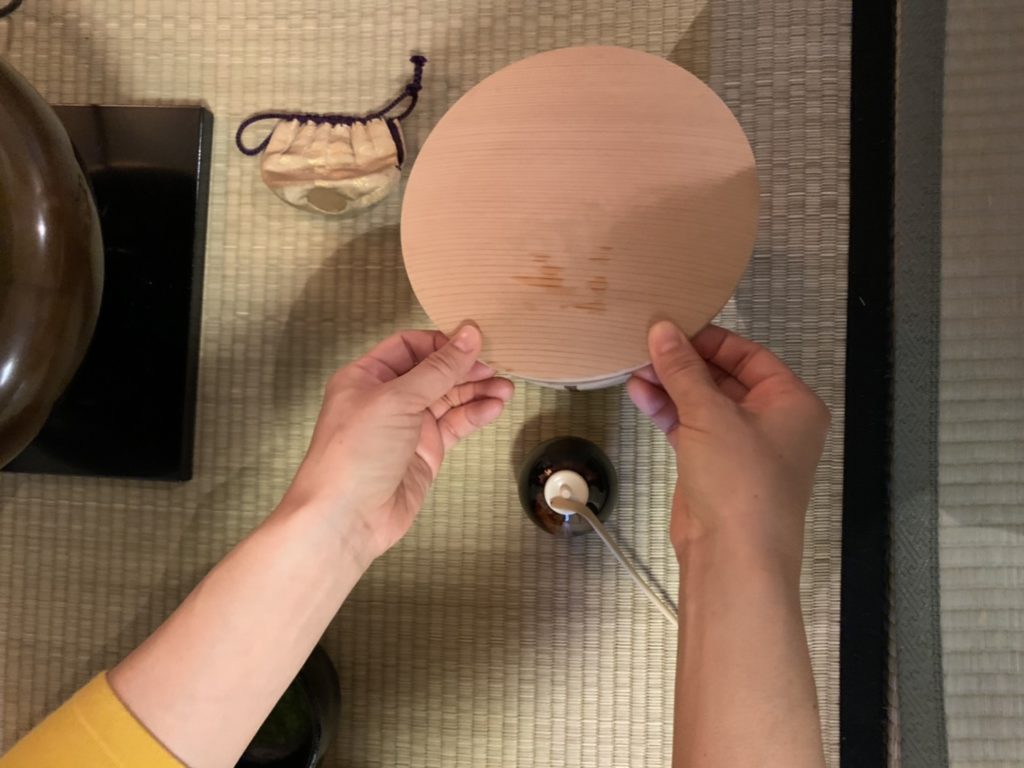
唐物のお点前で注意すべき点は、ふすまの開け閉め、拝見物を出す時は行の手をつく。茶入れを浄める時は袱紗を真にたたみ、茶入れを扱う時は常に両手扱い。元節の茶杓は袱紗を草にたたんで浄め、右手で茶杓の中ほど横をもって、茶入れに立て掛けます。曲げ水指の蓋の開け方も通常と少し勝手が違います。さあ、お茶が点ちました。『どうぞ一服、お召し上がりください』
Throughout the ceremony each time we entered or left the tearoom or when we gave tea wares to the guests for viewing, we put our hands on the floor in gyo (semi-fromal) style. It is important to remember to use both hands when handling the valuable chaire. Then it was time to enjoy the tea.
